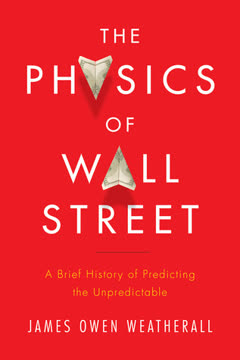Key Takeaways
1. The random walk hypothesis: From Bachelier to Black-Scholes
"Bachelier's work is referenced by a number of important mathematicians working in probability theory during the early twentieth century. But as the exchange with Lévy shows, many of the most influential people working in France during Bachelier's lifetime, including people who worked on topics quite close to Bachelier's specialties, were either unaware of him or dismissed his work as unimportant or flawed."
Pioneering work. Louis Bachelier's 1900 thesis laid the foundation for modern financial theory by proposing that stock prices follow a random walk. This idea was largely ignored until the 1950s when it was rediscovered and refined by economists and physicists.
Evolution of the theory.
- Osborne improved on Bachelier's work by suggesting that stock returns, not prices, follow a normal distribution
- Black and Scholes developed their famous options pricing model based on these ideas
- The efficient market hypothesis emerged as a central tenet of financial economics
Impact on finance. The random walk hypothesis and its derivatives revolutionized how academics and practitioners think about financial markets, leading to new financial products and risk management techniques.
2. Mandelbrot's challenge: Fat tails and wild randomness in markets
"Mandelbrot concluded that any predictable events would already be reflected in the current price of a stock or bond. In other words, if you had reason to think that something would happen in the future that would ultimately make a share of Microsoft worth more — say, that Microsoft would invent a new kind of computer, or would win a major lawsuit — you should be willing to pay more for that Microsoft stock now than someone who didn't think good things would happen to Microsoft, since you have reason to expect the stock to go up."
Fat-tailed distributions. Benoît Mandelbrot challenged the standard random walk model by showing that market returns exhibit "fat tails" – extreme events occur more frequently than predicted by normal distributions.
Implications for risk management.
- Traditional models underestimate the likelihood of market crashes
- Mandelbrot's work suggests that markets are "wildly random" rather than mildly random
- This has profound implications for how we think about financial risk and stability
Ongoing debate. While Mandelbrot's ideas have gained traction, there is still disagreement about the exact nature of market randomness and how to model it effectively.
3. Ed Thorp: Beating the dealer and the market
"Thorp discovered that if you sell warrants short, but at the same time you buy some shares of the underlying stock, you can protect yourself against the warrant increasing in value — because if the warrant increases in value, according to Thorp's calculations the stock price should also increase, limiting your losses on the warrant."
From blackjack to Wall Street. Ed Thorp applied his mathematical skills first to beat casinos at blackjack, then to develop successful trading strategies in financial markets.
Key innovations:
- Developed the first viable card counting system for blackjack
- Created a wearable computer with Claude Shannon to predict roulette outcomes
- Pioneered the use of quantitative methods in finance, including statistical arbitrage and hedging strategies
Legacy. Thorp's work demonstrated that it was possible to gain an edge in both gambling and financial markets through mathematical analysis, paving the way for the quant revolution on Wall Street.
4. The rise of quants: Physicists on Wall Street
"Black stayed in Chicago until 1975, when MIT wooed him back to Cambridge. For a few years, academia seemed like the perfect fit for Black. He could work on whatever he liked, and at least in the early heyday of exchange-based options trading, it seemed he could do no wrong. He was an academic celebrity of the highest order, which brought both respect and freedom."
Physics meets finance. The end of the Cold War and reduced funding for physics research led many physicists to transition into finance, bringing advanced mathematical and modeling skills to Wall Street.
Key contributions:
- Sophisticated models for pricing derivatives and managing risk
- New trading strategies based on statistical analysis and pattern recognition
- Improved computational methods for analyzing large datasets
Challenges and controversies. While quants have transformed finance, their models have also been criticized for potentially increasing systemic risk and contributing to financial crises.
5. Prediction Company: Chaos theory meets finance
"Farmer and Packard didn't use chaos theory as a meteorologist or a physicist might. They didn't do things such as attempt to find the fractal geometry underlying markets, or derive the deterministic laws that govern financial systems."
Innovative approach. Doyne Farmer and Norman Packard, pioneers in chaos theory, founded the Prediction Company to apply advanced mathematical techniques to financial markets.
Key strategies:
- Used machine learning and genetic algorithms to identify patterns in market data
- Developed "black box" trading models that evolve and adapt to changing market conditions
- Focused on short-term predictions and statistical arbitrage opportunities
Impact on quantitative finance. The Prediction Company's success demonstrated the potential of applying complex systems theory and advanced computational methods to financial markets, influencing the development of algorithmic trading.
6. Sornette's dragon kings: Predicting market crashes
"Sornette argues that many things that might seem like black swans really do issue warnings. In many cases, these warnings take the form of log-periodic precursors, oscillations in some form of data that occur only when the system is in the special state where a massive catastrophe can occur."
Dragon kings. Didier Sornette proposed that some extreme events in financial markets, which he calls "dragon kings," are predictable due to the self-organizing nature of complex systems.
Key ideas:
- Market crashes often exhibit log-periodic patterns before they occur
- These patterns result from positive feedback loops and herding behavior among investors
- By identifying these precursors, it may be possible to predict and potentially prevent major market crashes
Implications for risk management. Sornette's work challenges the notion that all extreme events are unpredictable "black swans" and suggests new approaches to systemic risk assessment.
7. The future of finance: A call for a new Manhattan Project
"Extremis malis extrema remedia." Desperate times call for desperate measures. What we need now, more than anything else, is a new source of economic ideas. This is why it is time to return to Weinstein's proposal for a new large-scale interdisciplinary research initiative."
Interdisciplinary collaboration. The author argues for a "new Manhattan Project" in finance, bringing together experts from physics, mathematics, economics, and other fields to develop more robust models and theories.
Key objectives:
- Improve understanding of complex financial systems and systemic risk
- Develop more accurate models for predicting market behavior and extreme events
- Create new tools for policymakers and regulators to better manage economic crises
Challenges and opportunities. While there are significant obstacles to such a large-scale collaboration, the potential benefits for economic stability and growth make it a worthwhile pursuit.
Last updated:
FAQ
What's The Physics of Wall Street about?
- Interdisciplinary Exploration: The book explores how physics, mathematics, and statistics have been applied to financial markets, focusing on the contributions of physicists and mathematicians.
- Historical Evolution: It traces the development of financial theories from early models by Louis Bachelier to modern applications by figures like Jim Simons and Fischer Black.
- Connections and Limitations: The narrative highlights how insights from physics can help predict market behavior while also addressing the limitations of these models.
Why should I read The Physics of Wall Street?
- Unique Integration: The book offers a fresh perspective by combining physics with finance, appealing to readers interested in both fields.
- Understanding Complex Models: It provides insights into mathematical models that underpin modern finance, such as random walks and option pricing.
- Historical Lessons: By examining past financial crises, it serves as a cautionary tale about the reliance on mathematical models in unpredictable markets.
What are the key takeaways of The Physics of Wall Street?
- Model Limitations: Mathematical models provide valuable insights but often fail to account for extreme events and market anomalies.
- Interdisciplinary Importance: Applying knowledge from various disciplines, particularly physics, is crucial for solving complex financial problems.
- Financial Theory Evolution: Readers learn about the historical development of financial theories and their impact on current Wall Street practices.
What are the best quotes from The Physics of Wall Street and what do they mean?
- Newton's Insight: “I can calculate the movements of stars, but not the madness of men.” This reflects the unpredictability of human behavior in financial markets.
- Caution in Application: “If we are going to use physics on Wall Street, we need to be deeply sensitive to where our current tools will fail us.” This emphasizes the need for caution and adaptability.
- Efficient Market Hypothesis: “The efficient market hypothesis offers a foothold for anyone trying to figure out how markets work.” This highlights its foundational role and controversies.
How does The Physics of Wall Street connect physics and finance?
- Interdisciplinary Approach: The book illustrates how principles from physics, like randomness and statistical mechanics, apply to financial markets.
- Historical Figures: It discusses key figures bridging these fields, such as Bachelier and Mandelbrot, and their influence on modern finance.
- Future Directions: The author suggests ongoing collaboration between physicists and financial practitioners for innovative solutions to economic challenges.
What is the random walk hypothesis in The Physics of Wall Street?
- Definition: The random walk hypothesis posits that stock prices evolve according to a random process, making future movements independent of past ones.
- Investor Implications: It suggests that predicting stock prices based on historical data is impossible, as price changes are essentially random.
- Bachelier and Osborne: Both contributed to this concept, with Osborne refining it to suggest that rates of return follow a random walk.
What is chaos theory, as explained in The Physics of Wall Street?
- Sensitive Dependence: This principle states that small changes in a system's initial state can lead to vastly different outcomes, complicating long-term predictions.
- Butterfly Effect: Coined by Edward Lorenz, it illustrates how minor events can significantly impact larger systems, like financial markets.
- Financial Application: Chaos theory helps understand market fluctuations and stock price unpredictability, emphasizing the need for robust models.
How does The Physics of Wall Street explain the role of quants?
- Definition: Quants are quantitative analysts using mathematical models for trading strategies and risk management in finance.
- Wall Street Impact: The book discusses how quants, especially those with physics and mathematics backgrounds, have transformed trading practices.
- Crisis Challenges: It addresses the limitations of quant models during financial crises, illustrating their inability to predict market behavior.
What is the significance of the Black-Scholes model in The Physics of Wall Street?
- Options Pricing: The Black-Scholes model provides a framework for pricing options, assessing value based on factors like stock price and volatility.
- Dynamic Hedging: It introduced dynamic hedging, allowing investors to create risk-free portfolios by balancing stocks and options.
- Modern Finance Foundation: Black-Scholes is fundamental in finance, shaping how derivatives are traded and valued.
How does The Physics of Wall Street address financial crises?
- Historical Analysis: The book examines crises like the 2007 quant crisis and 2008 meltdown, highlighting mathematical models' roles.
- Lessons Learned: It emphasizes caution in relying on models that may not account for extreme conditions, advocating for nuanced risk understanding.
- Future Implications: Learning from past crises can improve financial modeling and prevent similar issues.
What challenges do physicists face when entering finance, according to The Physics of Wall Street?
- Sociological Barriers: The finance industry can resist new ideas, especially from outside traditional economic frameworks, hindering physicists' acceptance.
- Human Behavior Complexity: Physics provides powerful modeling tools, but human behavior's unpredictability complicates their application.
- Adaptability Need: Physicists must navigate financial market nuances and revise models as conditions change, a shift from traditional physics environments.
What future directions does The Physics of Wall Street suggest for finance and economics?
- Interdisciplinary Initiatives: The author proposes a "Manhattan Project" for economics, encouraging collaboration among physicists, mathematicians, and economists.
- Complexity Emphasis: Understanding financial systems' complexities and markets' chaotic nature is essential for effective models and strategies.
- Model Evolution: Ongoing research and adaptation in financial modeling are crucial as markets evolve, requiring updated tools and theories.
Review Summary
The Physics of Wall Street received mixed reviews. Many readers found it an engaging history of how physics and math influenced finance, praising its accessibility and interesting anecdotes. However, some criticized the lack of technical depth and overemphasis on physicists' contributions. The book's exploration of financial models and their limitations was appreciated, though the author's optimism about modeling was questioned. Several reviewers found the epilogue particularly controversial, disagreeing with the author's stance on financial modeling and economic policy.
Similar Books
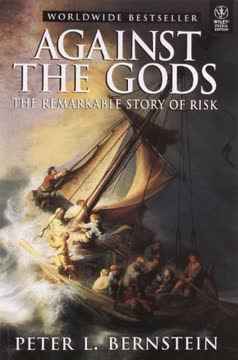




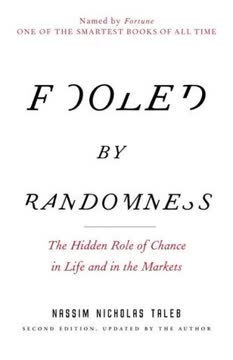

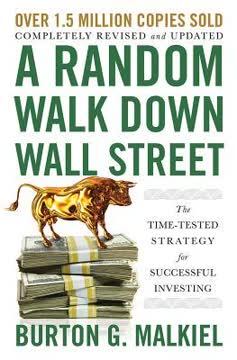

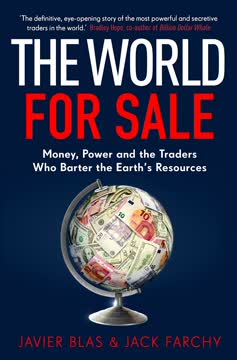
Download PDF
Download EPUB
.epub digital book format is ideal for reading ebooks on phones, tablets, and e-readers.
